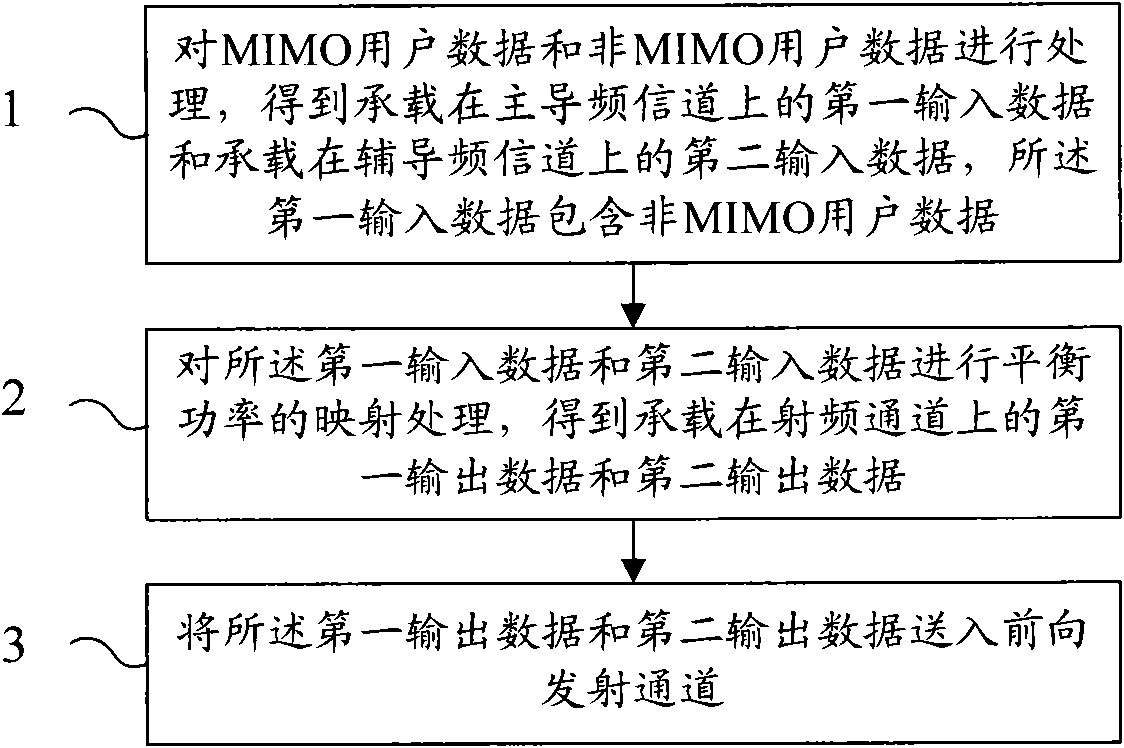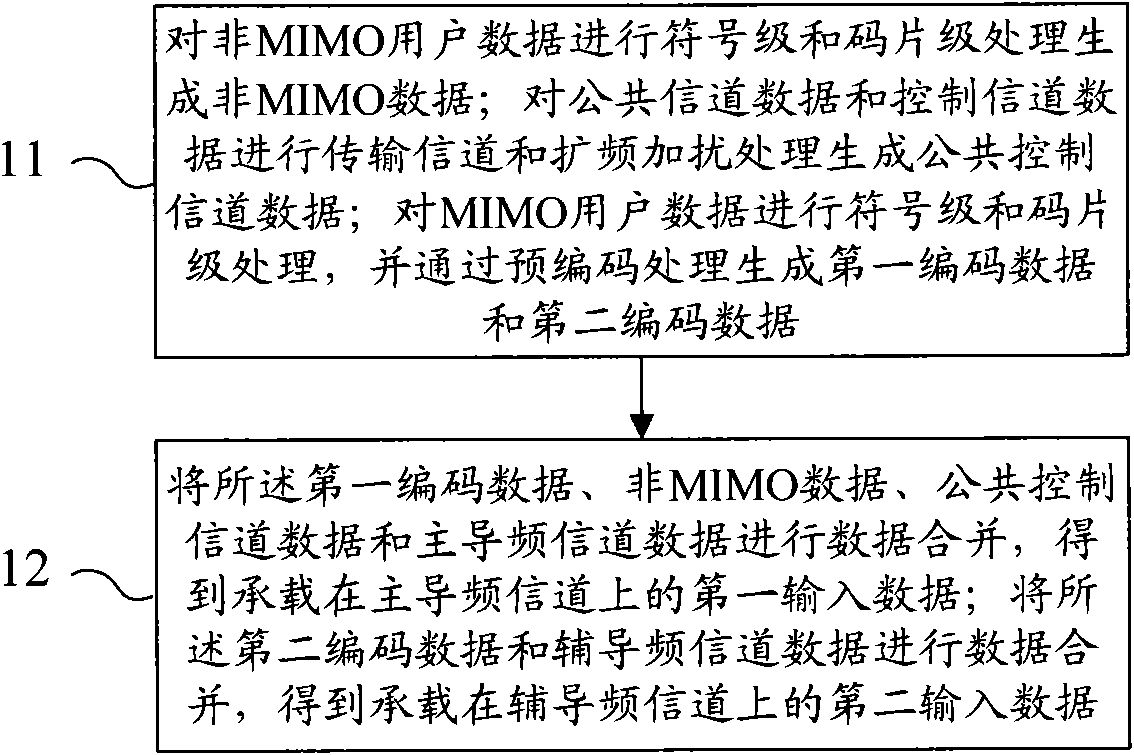Data processing method and device for hybrid networking
A data processing device and hybrid networking technology, applied in network traffic/resource management, power management, sustainable buildings, etc., can solve signal interference, user terminals cannot use balanced receivers, power imbalance of two radio frequency channels, etc. question
- Summary
- Abstract
- Description
- Claims
- Application Information
AI Technical Summary
Problems solved by technology
Method used
Image
Examples
Embodiment Construction
[0069] The technical solution of the present invention will be described in further detail below in conjunction with the accompanying drawings.
[0070] figure 1 It is a flowchart of a data processing method for hybrid networking according to an embodiment of the present invention, including:
[0071] Step 1. Process MIMO user data and non-MIMO user data to obtain first input data carried on the primary pilot channel and second input data carried on the secondary pilot channel, the first input data including non-MIMO users data;
[0072] Step 2. Perform balanced power mapping processing on the first input data and the second input data to obtain the first output data and the second output data carried on the radio frequency channel;
[0073] Step 3. Send the first output data and the second output data into the forward transmission channel.
[0074] In the above technical solution, the embodiment of the present invention firstly processes the baseband two-way data including...
PUM
 Login to View More
Login to View More Abstract
Description
Claims
Application Information
 Login to View More
Login to View More - R&D
- Intellectual Property
- Life Sciences
- Materials
- Tech Scout
- Unparalleled Data Quality
- Higher Quality Content
- 60% Fewer Hallucinations
Browse by: Latest US Patents, China's latest patents, Technical Efficacy Thesaurus, Application Domain, Technology Topic, Popular Technical Reports.
© 2025 PatSnap. All rights reserved.Legal|Privacy policy|Modern Slavery Act Transparency Statement|Sitemap|About US| Contact US: help@patsnap.com



